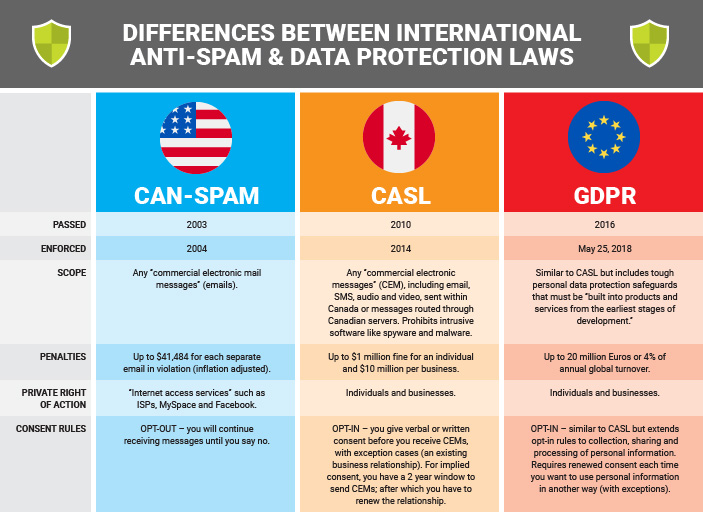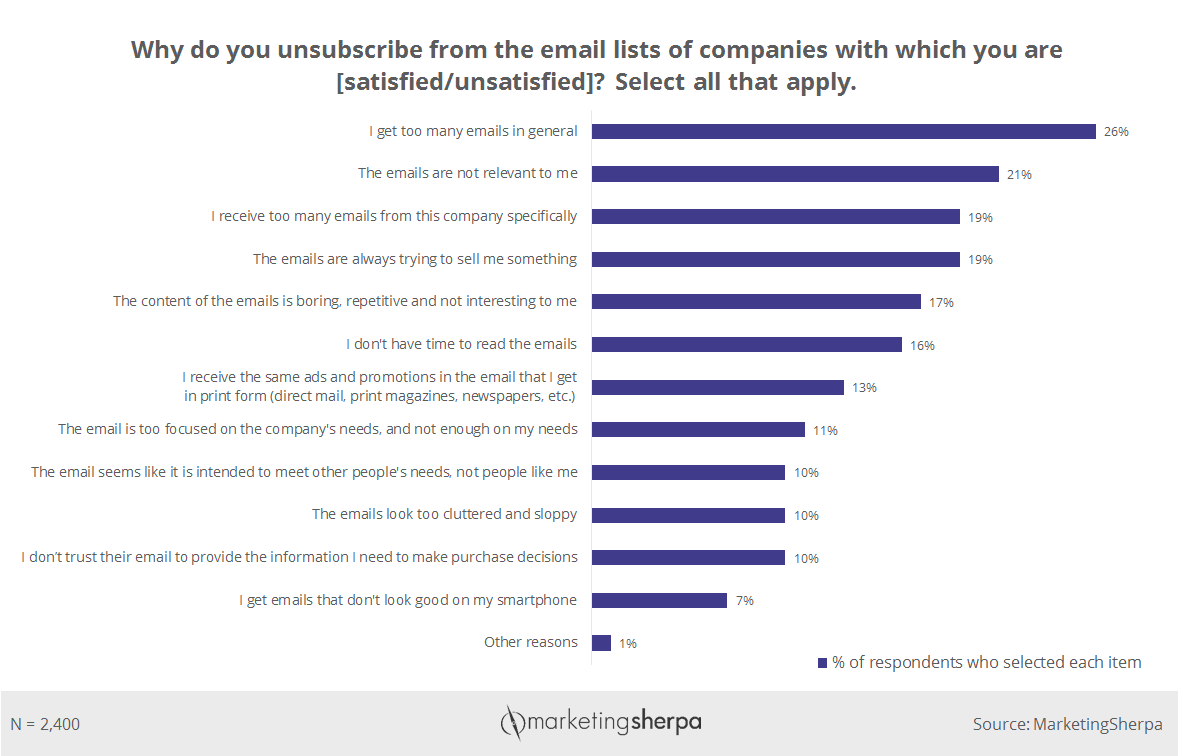Access our on-demand webinar where industry experts unpack the hidden world…
Story Highlights
- By following several best practices you can reduce risk.
- Compliance done right can actually provide for a better customer experience.
- Data centralization helps companies not only manage customer data better but also helps create a central customer record for departments that interact with customers, like marketing, sales and customer service.
Most marketers have heard of acronyms like GDPR, CAN-SPAM, CASL and even CCPA to describe customer data regulations. And while many have enacted rules for sending emails and for gathering consent on their website to comply with these regulations, most struggle with how to scale these rules in systematic ways across all digital channels.
It’s no secret that a marketer’s chief goal is to drive revenue for their organization. On top of legal considerations, marketers are caught between the mandate to generate revenue growth and a changing strategic landscape — with more distribution channels, significant technological transformation, greater customer expectations and increased advertising costs — which means successful companies must reimagine the role of marketing within an organization.
We believe that starts and ends with how a company manages its customer data pipeline. Gone are the days of traditional marketing that focused solely on marketing-specific objectives like brand awareness, content creation and generating impressions. While fully robust solutions can take time to implement there are several common sense actions that organizations can take now to set themselves up for success.
While the political-legal environment can be fluid, marketing and email compliance with these four regulations — GDPR, CASL, CAN-SPAM and CCPA — is a good start.

https://termly.io/resources/articles/can-spam-act/
Consent
Arguably, the most stringent regulation is the General Data Protection Regulation (GDPR), which governs customers and companies that do business in the European Union. It requires the following things:
- Consent must be obtained from customers to use their information. This could entail using cookies to track web behavior or to send customers marketing materials.
- Customers have the right to be forgotten. If a customer requests to have their data purged a company must do so “without undue delay.” This includes communicating to the requestor the steps the company plans to take within 30 days.
While markets outside of the EU do not have consent policies that are quite as stringent, gaining opt-in from customers is not only crucial from a compliance standpoint. But it also pays dividends from a customer experience perspective. Here’s why:
If you know what your customers want and can send them personally relevant messages it builds trust with your brand. Infosys found that 78% of consumers are more likely to buy from retailers with targeted ads. Furthermore, if you understand the interests of your customers and how frequently they want information you can better target your communications and reduce disengagement. Figure 1 below, courtesy of Marketing Sherpa, illustrates the top reasons why a consumer unsubscribes.

To track consent we suggest using a consent manager that opts users into having their data collected and stored via a web experience. A good example of this can be found on the Marketo site. Second, on form completes, registrations or purchase workflows it is important to ask for and even encourage consent as part of the submission process, which is tracked in a centralized consent system. Last, if someone wishes to opt out or unsubscribe it is important to provide users an effective workflow to not only remove themselves from that list but to hopefully maintain their subscriptions to other relevant products through a preference center.
Data Governance
If your company is like most there are numerous databases where customer information is stored. At even a small- to midsize business you might have a CRM system that manages sales interactions, an email system that sends email, a customer service platform used by the service team, a webinar platform and event platform, various ad platforms (AdWords, Facebook, LinkedIn), an ecommerce platform or even a point-of-sale system to name a few. And that’s before you get into any internal systems or databases where customers fulfill or access your products.
When it comes to data management this siloed approach is detrimental not only to your business but also to your ability to comply with privacy and email law. Just imagine how hard it would be to delete data from someone who requests to be forgotten if his or her data resides in multiple databases sometimes managed by different teams.
Our recommendation is to invest in a centralized, master customer data management infrastructure like a customer data platform or data lake. Mapping data together to understand where it is generated and resides not only protects companies but also lets you utilize that same master customer record in campaigns to personalize the customer experience. And that will then reduce your risk while amplifying your sales opportunities. Here’s how a master customer data management system works in practice:
- Help standardize data across systems. That means if the customer address changes the master customer record gets updated so our mailing campaign gets to the prospect and not returned to the sender.
- Reduce the time to compliance. Most systems are able to connect directly into a wide variety of marketing platforms and use low- or no-code logic to clean, store and aggregate that data for the master record.
- Less developer resourcing to eliminate opportunity costs. The more that platforms integrate and are standardized the fewer custom developer resources are needed. Development resources generally cost more than marketing resources and these scarce resources can be used on products that are critical to your competitive advantage.
- Reduced ongoing management expenses. Gartner found that bad data costs companies an average of $15 million per year. That adds up to nearly $3.1 trillion annually for U.S. firms, according to IBM.
- Data sharing provides for better customer experiences. Imagine how valuable it would be to sales if they knew all customer touch points when reaching out on a lead. Or the importance of your customer service team being able to see the value of each customer. Last, how much revenue could be gained by the marketing team being able to segment based on all customer activities? On the flip side, how much wasted ad spend could be avoided by better consumer targeting based on data?
While these recommendations might result in seismic changes to your business, they are possible and will give your company a leg up over the competition. Zirous, a technology data and insights company established by leading communications, IT and sales experts, is here to help you every step of the way.
We speak the language of business and technology to create customer-centric organizations. Contact us today to learn more.


This Post Has 0 Comments